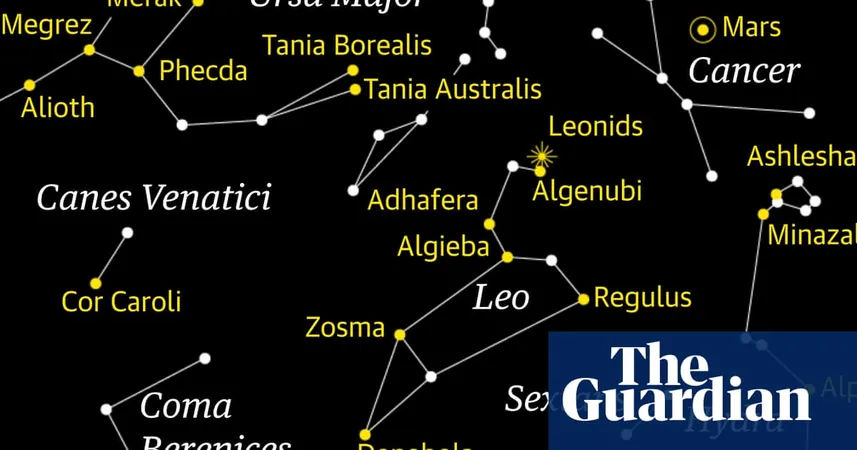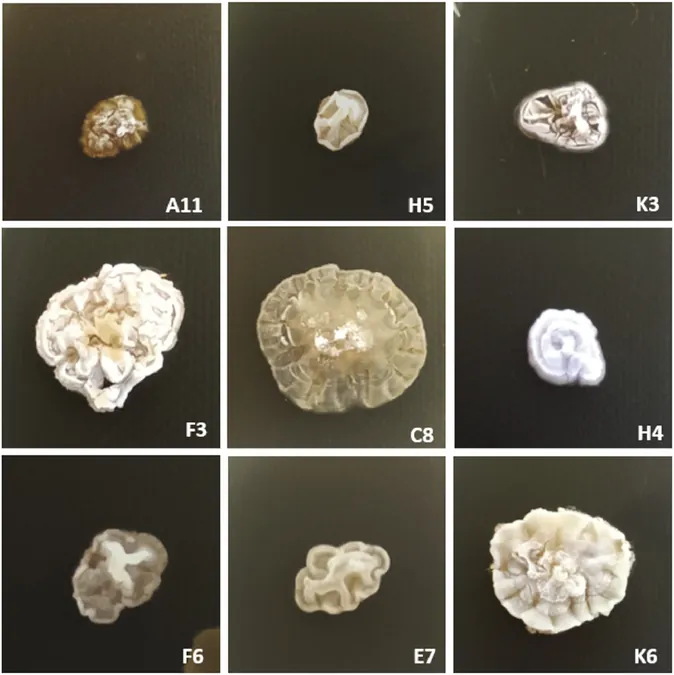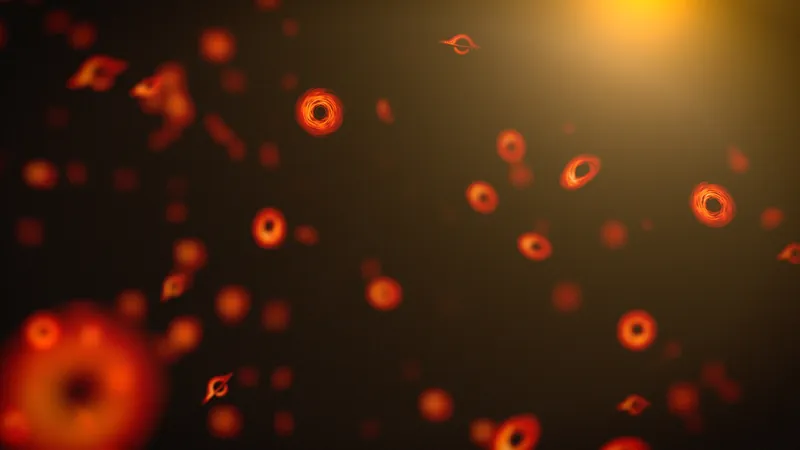
Get Ready for the Leonid Meteor Shower: A Celestial Show You Can't Miss!
2024-11-11
Author: Yu
Introduction
November marks the return of the mesmerizing Leonid meteor shower, renowned for its bright and swift meteors that light up the night sky at rates of up to 15 meteors per hour. These celestial wonders originate from the tail of the comet 55P/Tempel-Tuttle, which hurtles through space at an astonishing speed of 70 km per second (43.5 miles per second). As these dust grains collide with Earth's atmosphere, they create brilliant flashes and long-lasting trails that leave skywatchers in awe.
Meteor Storms
Typically, the Leonids are known for their reliability, but every 33 years, they can unleash spectacular meteor storms that produce thousands of meteors in a single hour. Such extraordinary displays were witnessed in years like 1833, 1866, 1966, and 1999. Unfortunately, the next meteor storm isn't anticipated until 2032, making this November's viewing particularly special.
Viewing Information
This year's Leonids will be active from November 6 to November 30, with the pinnacle of the shower expected on the night of November 17 and the early morning hours of November 18. The best conditions for viewing will be after midnight, especially in the early hours of November 18.
Tips for Observing the Leonids
For optimal viewing, find a dark location free from light pollution, preferably with a clear view of the eastern horizon. At around 02:00 GMT, look for meteors radiating from the designated 'Leonids' point in the heavens. So, if the weather cooperates, don your warmest clothes, settle back in a comfortable chair, and immerse yourself in the breathtaking spectacle of the Leonid meteor shower. This is an astronomy event that surely deserves a front-row seat!



 Brasil (PT)
Brasil (PT)
 Canada (EN)
Canada (EN)
 Chile (ES)
Chile (ES)
 España (ES)
España (ES)
 France (FR)
France (FR)
 Hong Kong (EN)
Hong Kong (EN)
 Italia (IT)
Italia (IT)
 日本 (JA)
日本 (JA)
 Magyarország (HU)
Magyarország (HU)
 Norge (NO)
Norge (NO)
 Polska (PL)
Polska (PL)
 Schweiz (DE)
Schweiz (DE)
 Singapore (EN)
Singapore (EN)
 Sverige (SV)
Sverige (SV)
 Suomi (FI)
Suomi (FI)
 Türkiye (TR)
Türkiye (TR)